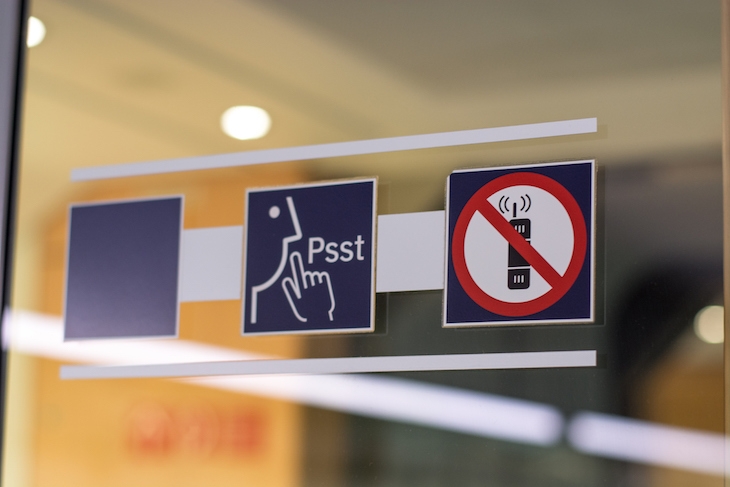Every now and then I try to invent a new scientific unit. I’ll never come up with anything as good as the millihelen — a unit of beauty sufficient to launch one ship — or the Sheppey, which is a distance of approximately seven-eighths of a mile defined as ‘the minimum distance at which sheep remain picturesque’. But I do have hopes for the tedion, which measures the half-life of boredom: it denotes the time you must spend in a location to enjoy a 50 per cent chance of overhearing someone say something interesting or funny.
On a train to Cardiff or Manchester, a tedion is probably around five to ten minutes. On a Home Counties commuter train it runs into days — or in London, the conversational nadir of the UK, weeks.
In Wales I caught this exchange: ‘So how do you know they’ve had sex?’ ‘Well, I saw her in Abergavenny, and she was wearing his wellies.’ In London you could spend a year on public transport and never hear anything above the level of ‘So we decided to use Dave’s departure as an opportunity to restructure procurement.’ In London the need to look busy trumps the need to be interesting. By contrast, in laid-back cities like Liverpool and Dublin the banter bar is set very high.
So that’s one reason I never use the quiet carriages whose abolition Peter Jones lamented in a recent article in The Spectator. Living in Newcastle, Peter is probably well supplied with colourful Geordie aperçus. To those of us trapped in London, a train journey is the only chance we get to overhear any decent conversation.
But the other reason I hate these carriages is that, unless you are a Trappist monk, it is almost impossible to use them without incurring sanctimonious disapproval from some self-appointed noise-Nazi.
In Japan (where the ‘vibrate’ function on a mobile phone is known as ‘the manners button’) the rules on trains are clear-cut and universal: outside a few designated areas, voice calls on trains are unacceptable. Having your phone ring audibly on a train is almost as embarrassing to the Japanese as if it happens in a theatre here. But texting, typing, listening to music on headphones are fine, as is respectful conversation.
The same rule applies throughout the train. I’d be happy for something similar to become adopted in Britain: no ringtones — and if you want to make a call longer than 60 seconds, go and stand between the carriages. The problem with quiet carriages is that, by bundling all the oversensitive arseholes on the train in one place, it creates a death spiral of neuroticism. Without clear rules, you find yourself policed by some ageing noise vigilante, who spends the journey scanning for signs that someone might soon emit a decibel.
In the past such cranks have scolded me for ‘typing too loudly’ on my laptop, for ‘tapping a pen’ and for listening to harpsichord music on headphones. If you use a phone only to listen to voicemail, the same git will jab his finger at the ‘Quiet Zone’ sign. I then have to fight the childish urge to annoy him — perhaps by constant beatboxing, or playing a trumpet.
The quiet carriage, when you think of it, is akin to the idea of a safe space. Just as in a quiet carriage the rules are set by the single most neurotic person on the train, in a ‘safe space’, the terms of acceptable discourse are set by the thinnest-skinned 0.01 per cent of the population.
And like the quiet carriage, this simply does not work. Just as you can’t run a restaurant which serves only food to which nobody is allergic, a space which annoys no one becomes intolerable to everyone.






Comments